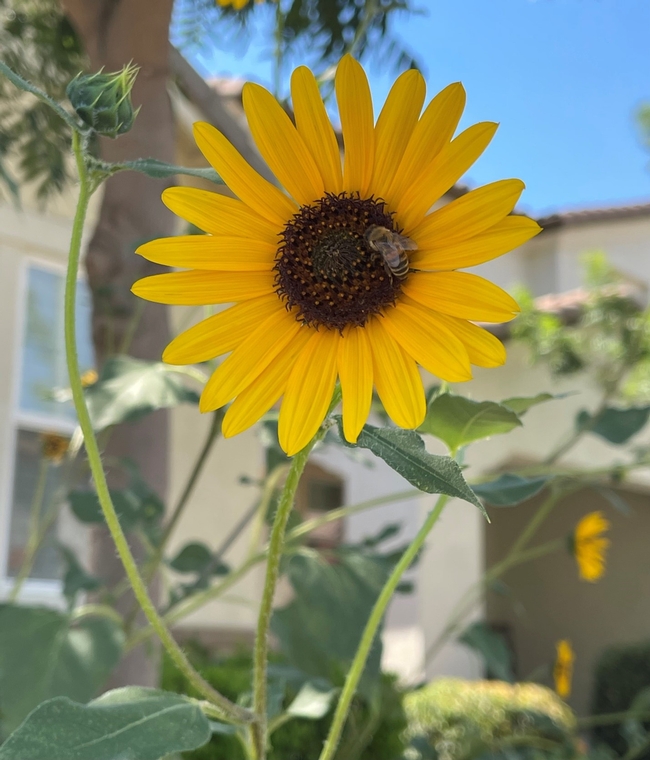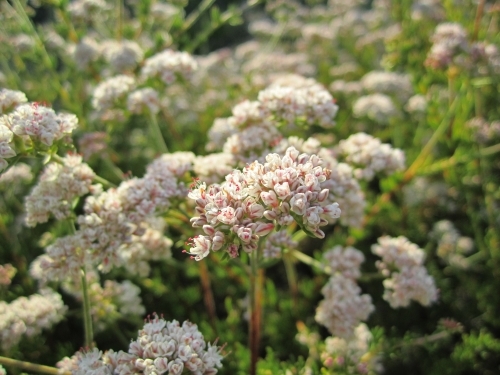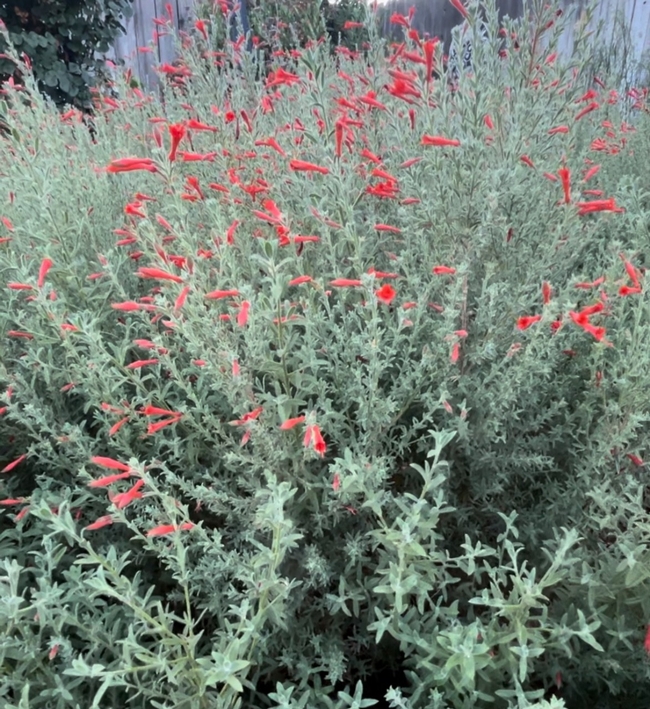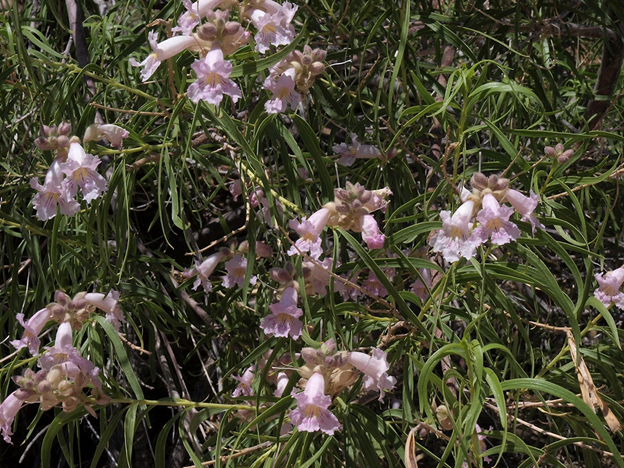- Author: Denise Godbout-Avant

What's blooming now?
Here are a few of my favorite California native plants that bloom during the months of July and August when little else is flowering:
California Buckwheat (Eriogonum fasciculatum var. fasciculatum) – With their leathery leaves, buckwheat shrubs are tough sun-lovers, and easy to grow. Once established it needs little to no water during the summer months. Abundant clusters of white, cream, yellow, and pink flowers appear as early as March and bloom all summer, drying to a red color. A good source of nectar and pollen during the drier months, it is a favored plant of a variety of pollinators including bees, butterflies and birds. Other good native buckwheat choices are St. Catherine's Lace (Eriogonium giganteum) and Santa Cruz Island buckwheat (Eriogonum arborescens).
St. Catherine's Lace (Eriogonum giganteum) – Another buckwheat, this showy evergreen plant has wooly, whitish-grayfoliage, usually growing to 2-4 feet tall x 4-5 feet wide. Large, dense clusters of tiny, lacy pinkish-white flowers gradually turn reddish-brown over the summer. Once established it requires little water. The UC Davis Arboretum named this easy-to-care for plant one of its “All-Stars” for growing in California gardens. An important butterfly plant, it also supports honeybees, native bees, moths and attracts birds.
California Fuchsia (Epilobium canum) – With its profusion of bright scarlet, tubular shaped flowers, this fuchsia is a magnet for hummingbirds and provides a splash of color to a summer garden. A perennial plant that is easy to grow, it tolerates almost any soil, and does well in the sun or partial shade. Like buckwheats, once established it generally needs no water during the summer. It will continue to bloom into autumn, dying back and going dormant in the winter. There are a number of varieties, including some white and pink ones: the Brilliant Smith California fuchsia ((Epilobium ‘Brilliant Smith'), Solidarity Pink California Fuchsia (Epilobium ‘Solidarity Pink'), and the white Summer Snow California Fuchsia (Epilobium ‘Summer Snow').
California Sunflower (Helianthus californicus) – This wild sunflower is an erect perennial that is a somewhatsprawling,lanky plant up to 3 meters or more, with a network of tough, woody roots and small rhizomes. The classic sunflowers are bright yellow, blooming during the summer and fall, which attract a variety of bees and other pollinators. Birds love the seeds they produce.
Narrowleaf Milkweed (Asclepias fascicularis) – This 3 foot tall milkweed plant blooms in summer and fall with clusters of light lavender or pink-white flowers. Its long pointed leaves gives it a delicate appearance. This species is probably the single most important milkweed species for the endangered Monarch butterflies since it is a major host plant for their caterpillars. Do not spray pesticides near them since that could be fatal to the Monarch caterpillars. The plant also provides resources for other beneficial creatures including native bees. The fruit are small pods that split open, spilling their seeds in silky hairs that are carried through the air. Dormant in the winter, it grows well in the summer with no water.
Desert Willow Tree – (Chilopsis linearis) – This small deciduous tree (12 – 18 ft. tall) blooms much of the summer. It gets its name because of its willow-like leaves and is drought-tolerant. A fast growing, low-maintenance tree once established, its lovely trumpet-shaped flowers in a variety of pink, lavender, and white colors attract butterflies, bees and birds.
When to Plant
While these plants all thrive in the summer heat with little water, this is not a good time to plant them! The cooler months of fall or early spring is always the best time to plant new plants in your garden. They will need moderate watering until they are established, which usually takes a year or two.
You cannot go wrong with planting any of these native plants in your garden for colorful summer flowers that are water-wise, easy to care for, adapted to our summer heat, and will attract pollinators!
Some publications with information about California native plants:
Created by California Native Plant Society, it is an excellent source of information on native plants: https://www.calscape.org/
8 Summer-blooming Plants: https://publicgarden.ucdavis.edu/blog/8-summer-blooming-plants
WUCOLS: Water Use Classification of Landscape Species is landscape-based search website that is based by region: https://wucols-frontend.ucdavis.edu/#/search
UC Davis Arboretum All-Stars: https://arboretum.ucdavis.edu/arboretum-all-stars

